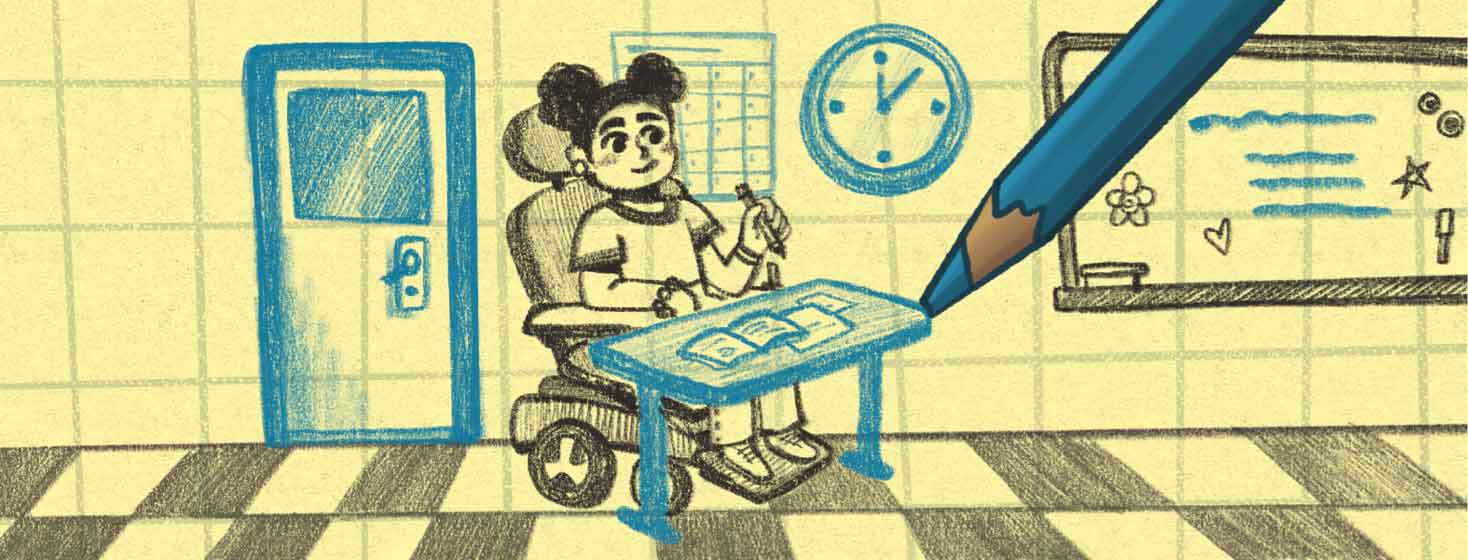Navigating School Accommodations for Children With SMA
Reviewed by: HU Medical Review Board | Last reviewed: October 2022 | Last updated: October 2023
The United States government has many laws that protect rights to education for children with disabilities. Spinal muscular atrophy (SMA) is considered an orthopedic impairment under these laws. This means children with SMA are legally entitled to certain rights in school.1,2
What laws apply and how?
There are many US laws that help people with disabilities. Some that may help children with SMA include:1
- Individuals with Disabilities Education Act (IDEA): This law requires public schools to provide all children with disabilities a free education in the least restrictive environment (LRE) appropriate. This is the law that requires schools to make an Individualized Education Program (IEP) for every child who needs one. For questions about IDEA, contact the customer service representatives in your state’s Office of Special Education Programs.
- Title II of the Americans with Disabilities Act (ADA) of 1990: This section of the ADA prohibits discrimination in all state and local activities. This includes public schools.
- Rehabilitation Act, Section 504: This section requires programs that receive federal funding to be accessible to everyone and not discriminate. This also includes public schools.
More specific rules and guidelines may apply for your child's education. These depend on your state, county, or school district. But overall, these rights are protected under federal law. Private schools that do not accept federal funds do not have to follow the rules outlined by IDEA or Section 504. But they still must adhere to the ADA.1
What does "least restrictive environment" mean?
IDEA requires that students with disabilities be given access to education in the appropriate LRE. But what exactly does an LRE involve? There are many parts to the law that spell LRE out legally. In general, it requires schools to do their best not to remove children for special schooling or classes. The school must make an effort to keep the child in standard classes.3
What is an IEP?
IDEA requires schools to make an IEP for each child who needs one. The IEP outlines how a student will be accommodated at school. The specifics will depend on your child’s needs. For example, an IEP might state the child:4
- Gets extra time for assignments
- Receives help taking notes
- Is allowed to leave class early to get to the next class
What are 504 plans?
A 504 plan and an IEP under IDEA have slightly different qualifications. A student who is entitled to a 504 plan may not qualify for an IEP. But Section 504 offers similar protections for your child.4
Which plan is right for my child?
You can request an IEP or 504 plan for your child. Different school systems may recommend one type of plan over another. Ask your school which plan will help your student the most. This is something you will have to do at the start of each school year.4,5
Your child’s care team may need to send a letter to the school explaining how SMA affects your child and recommending any necessary accommodations. Your school will hold a meeting to hammer out the plan with:4,6
- Parents
- Care team members
- Your child (if they are old enough to participate)
Before preschool and after high school
Legal rights for your child extend beyond school ages. From their birth to age 2, your child can get early services under IDEA Part C. IDEA Part B includes protections for your child from the ages of 3 to 21.7
After high school, the ADA requires accommodations in college. The ADA requires colleges and universities to provide necessary accommodations for students with disabilities.8
What does this mean for my child?
These laws are in place to help children with disabilities. But they can still be challenging to navigate, especially when your child first starts school. With time, the process should start to become routine. As your child ages, consider involving them. This can help them advocate for themselves and builds independence.1,3

Join the conversation